Juan A. Rodriguez
Rendering-Aware Reinforcement Learning for Vector Graphics Generation
May 27, 2025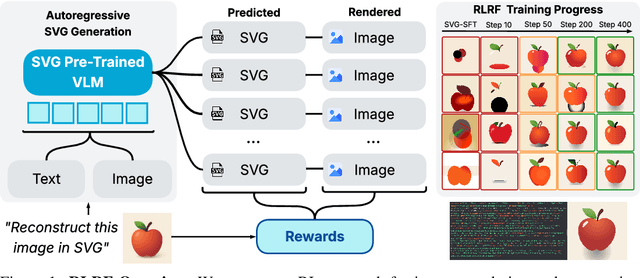
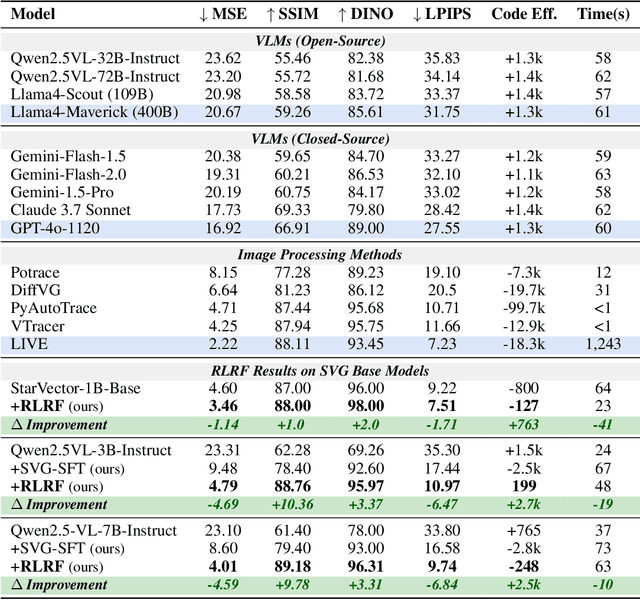

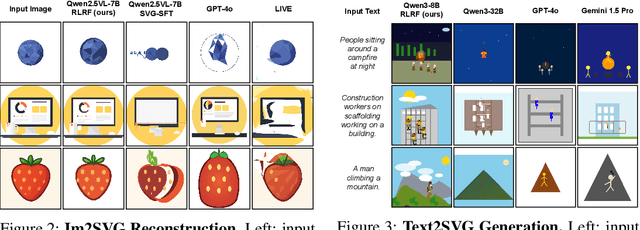
Abstract:Scalable Vector Graphics (SVG) offer a powerful format for representing visual designs as interpretable code. Recent advances in vision-language models (VLMs) have enabled high-quality SVG generation by framing the problem as a code generation task and leveraging large-scale pretraining. VLMs are particularly suitable for this task as they capture both global semantics and fine-grained visual patterns, while transferring knowledge across vision, natural language, and code domains. However, existing VLM approaches often struggle to produce faithful and efficient SVGs because they never observe the rendered images during training. Although differentiable rendering for autoregressive SVG code generation remains unavailable, rendered outputs can still be compared to original inputs, enabling evaluative feedback suitable for reinforcement learning (RL). We introduce RLRF(Reinforcement Learning from Rendering Feedback), an RL method that enhances SVG generation in autoregressive VLMs by leveraging feedback from rendered SVG outputs. Given an input image, the model generates SVG roll-outs that are rendered and compared to the original image to compute a reward. This visual fidelity feedback guides the model toward producing more accurate, efficient, and semantically coherent SVGs. RLRF significantly outperforms supervised fine-tuning, addressing common failure modes and enabling precise, high-quality SVG generation with strong structural understanding and generalization.
Distilling semantically aware orders for autoregressive image generation
Apr 23, 2025Abstract:Autoregressive patch-based image generation has recently shown competitive results in terms of image quality and scalability. It can also be easily integrated and scaled within Vision-Language models. Nevertheless, autoregressive models require a defined order for patch generation. While a natural order based on the dictation of the words makes sense for text generation, there is no inherent generation order that exists for image generation. Traditionally, a raster-scan order (from top-left to bottom-right) guides autoregressive image generation models. In this paper, we argue that this order is suboptimal, as it fails to respect the causality of the image content: for instance, when conditioned on a visual description of a sunset, an autoregressive model may generate clouds before the sun, even though the color of clouds should depend on the color of the sun and not the inverse. In this work, we show that first by training a model to generate patches in any-given-order, we can infer both the content and the location (order) of each patch during generation. Secondly, we use these extracted orders to finetune the any-given-order model to produce better-quality images. Through our experiments, we show on two datasets that this new generation method produces better images than the traditional raster-scan approach, with similar training costs and no extra annotations.
UI-Vision: A Desktop-centric GUI Benchmark for Visual Perception and Interaction
Mar 19, 2025Abstract:Autonomous agents that navigate Graphical User Interfaces (GUIs) to automate tasks like document editing and file management can greatly enhance computer workflows. While existing research focuses on online settings, desktop environments, critical for many professional and everyday tasks, remain underexplored due to data collection challenges and licensing issues. We introduce UI-Vision, the first comprehensive, license-permissive benchmark for offline, fine-grained evaluation of computer use agents in real-world desktop environments. Unlike online benchmarks, UI-Vision provides: (i) dense, high-quality annotations of human demonstrations, including bounding boxes, UI labels, and action trajectories (clicks, drags, and keyboard inputs) across 83 software applications, and (ii) three fine-to-coarse grained tasks-Element Grounding, Layout Grounding, and Action Prediction-with well-defined metrics to rigorously evaluate agents' performance in desktop environments. Our evaluation reveals critical limitations in state-of-the-art models like UI-TARS-72B, including issues with understanding professional software, spatial reasoning, and complex actions like drag-and-drop. These findings highlight the challenges in developing fully autonomous computer use agents. By releasing UI-Vision as open-source, we aim to advance the development of more capable agents for real-world desktop tasks.
AlignVLM: Bridging Vision and Language Latent Spaces for Multimodal Understanding
Feb 03, 2025



Abstract:Aligning visual features with language embeddings is a key challenge in vision-language models (VLMs). The performance of such models hinges on having a good connector that maps visual features generated by a vision encoder to a shared embedding space with the LLM while preserving semantic similarity. Existing connectors, such as multilayer perceptrons (MLPs), often produce out-of-distribution or noisy inputs, leading to misalignment between the modalities. In this work, we propose a novel vision-text alignment method, AlignVLM, that maps visual features to a weighted average of LLM text embeddings. Our approach leverages the linguistic priors encoded by the LLM to ensure that visual features are mapped to regions of the space that the LLM can effectively interpret. AlignVLM is particularly effective for document understanding tasks, where scanned document images must be accurately mapped to their textual content. Our extensive experiments show that AlignVLM achieves state-of-the-art performance compared to prior alignment methods. We provide further analysis demonstrating improved vision-text feature alignment and robustness to noise.
IntentGPT: Few-shot Intent Discovery with Large Language Models
Nov 16, 2024Abstract:In today's digitally driven world, dialogue systems play a pivotal role in enhancing user interactions, from customer service to virtual assistants. In these dialogues, it is important to identify user's goals automatically to resolve their needs promptly. This has necessitated the integration of models that perform Intent Detection. However, users' intents are diverse and dynamic, making it challenging to maintain a fixed set of predefined intents. As a result, a more practical approach is to develop a model capable of identifying new intents as they emerge. We address the challenge of Intent Discovery, an area that has drawn significant attention in recent research efforts. Existing methods need to train on a substantial amount of data for correctly identifying new intents, demanding significant human effort. To overcome this, we introduce IntentGPT, a novel training-free method that effectively prompts Large Language Models (LLMs) such as GPT-4 to discover new intents with minimal labeled data. IntentGPT comprises an \textit{In-Context Prompt Generator}, which generates informative prompts for In-Context Learning, an \textit{Intent Predictor} for classifying and discovering user intents from utterances, and a \textit{Semantic Few-Shot Sampler} that selects relevant few-shot examples and a set of known intents to be injected into the prompt. Our experiments show that IntentGPT outperforms previous methods that require extensive domain-specific data and fine-tuning, in popular benchmarks, including CLINC and BANKING, among others.
StarVector: Generating Scalable Vector Graphics Code from Images
Dec 17, 2023


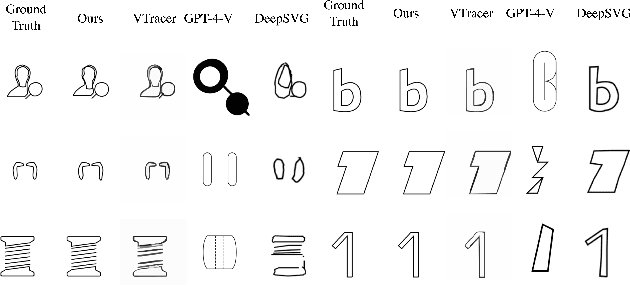
Abstract:Scalable Vector Graphics (SVGs) have become integral in modern image rendering applications due to their infinite scalability in resolution, versatile usability, and editing capabilities. SVGs are particularly popular in the fields of web development and graphic design. Existing approaches for SVG modeling using deep learning often struggle with generating complex SVGs and are restricted to simpler ones that require extensive processing and simplification. This paper introduces StarVector, a multimodal SVG generation model that effectively integrates Code Generation Large Language Models (CodeLLMs) and vision models. Our approach utilizes a CLIP image encoder to extract visual representations from pixel-based images, which are then transformed into visual tokens via an adapter module. These visual tokens are pre-pended to the SVG token embeddings, and the sequence is modeled by the StarCoder model using next-token prediction, effectively learning to align the visual and code tokens. This enables StarVector to generate unrestricted SVGs that accurately represent pixel images. To evaluate StarVector's performance, we present SVG-Bench, a comprehensive benchmark for evaluating SVG methods across multiple datasets and relevant metrics. Within this benchmark, we introduce novel datasets including SVG-Stack, a large-scale dataset of real-world SVG examples, and use it to pre-train StarVector as a large foundation model for SVGs. Our results demonstrate significant enhancements in visual quality and complexity handling over current methods, marking a notable advancement in SVG generation technology. Code and models: https://github.com/joanrod/star-vector
FigGen: Text to Scientific Figure Generation
Jun 21, 2023



Abstract:The generative modeling landscape has experienced tremendous growth in recent years, particularly in generating natural images and art. Recent techniques have shown impressive potential in creating complex visual compositions while delivering impressive realism and quality. However, state-of-the-art methods have been focusing on the narrow domain of natural images, while other distributions remain unexplored. In this paper, we introduce the problem of text-to-figure generation, that is creating scientific figures of papers from text descriptions. We present FigGen, a diffusion-based approach for text-to-figure as well as the main challenges of the proposed task. Code and models are available at https://github.com/joanrod/figure-diffusion
OCR-VQGAN: Taming Text-within-Image Generation
Oct 19, 2022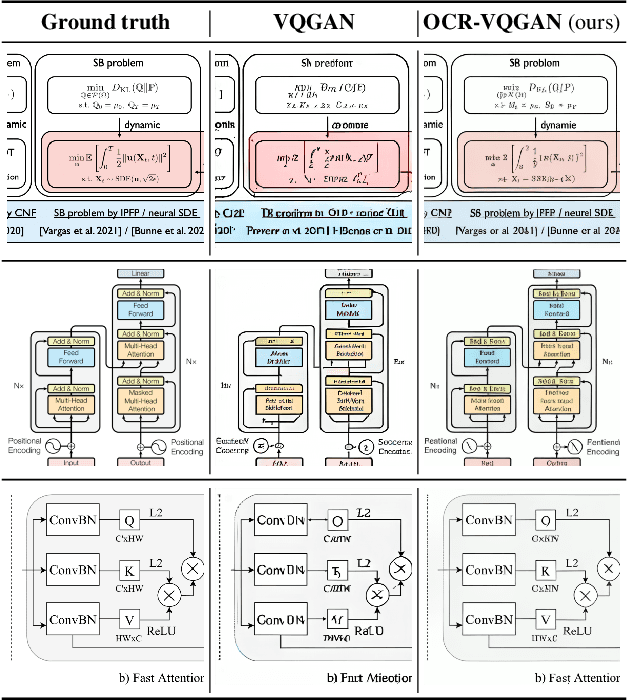
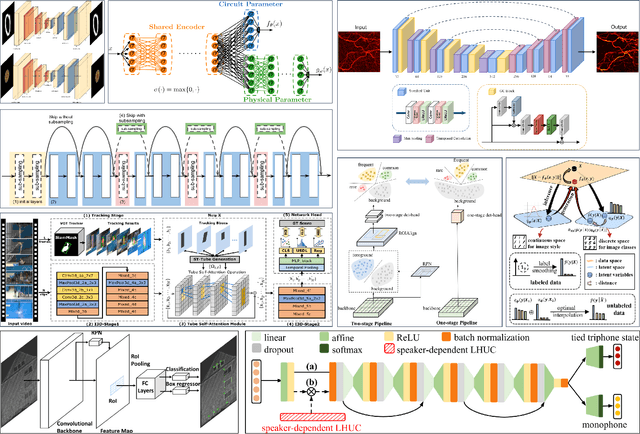
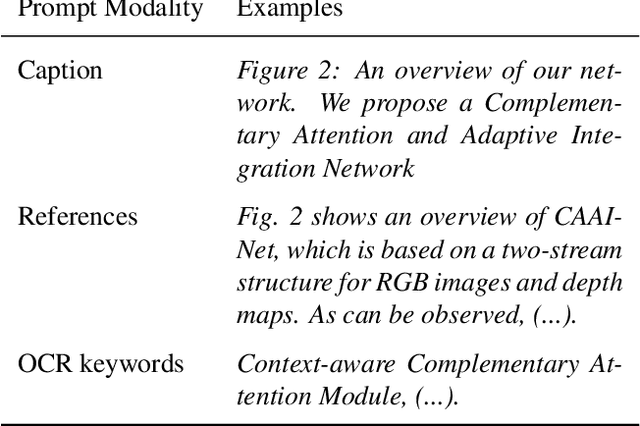
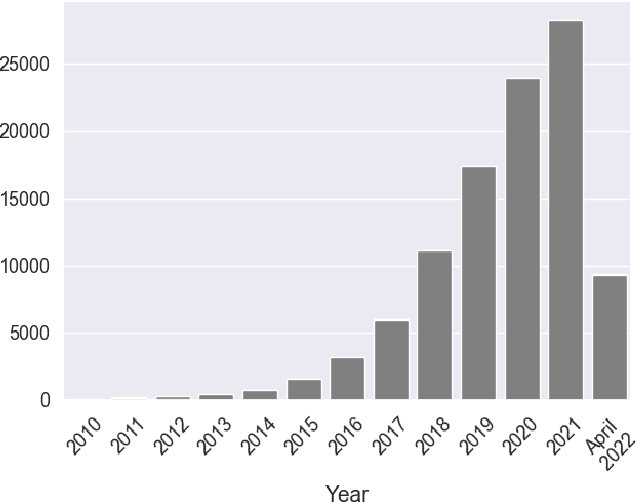
Abstract:Synthetic image generation has recently experienced significant improvements in domains such as natural image or art generation. However, the problem of figure and diagram generation remains unexplored. A challenging aspect of generating figures and diagrams is effectively rendering readable texts within the images. To alleviate this problem, we present OCR-VQGAN, an image encoder, and decoder that leverages OCR pre-trained features to optimize a text perceptual loss, encouraging the architecture to preserve high-fidelity text and diagram structure. To explore our approach, we introduce the Paper2Fig100k dataset, with over 100k images of figures and texts from research papers. The figures show architecture diagrams and methodologies of articles available at arXiv.org from fields like artificial intelligence and computer vision. Figures usually include text and discrete objects, e.g., boxes in a diagram, with lines and arrows that connect them. We demonstrate the effectiveness of OCR-VQGAN by conducting several experiments on the task of figure reconstruction. Additionally, we explore the qualitative and quantitative impact of weighting different perceptual metrics in the overall loss function. We release code, models, and dataset at https://github.com/joanrod/ocr-vqgan.
 Add to Chrome
Add to Chrome Add to Firefox
Add to Firefox Add to Edge
Add to Edge